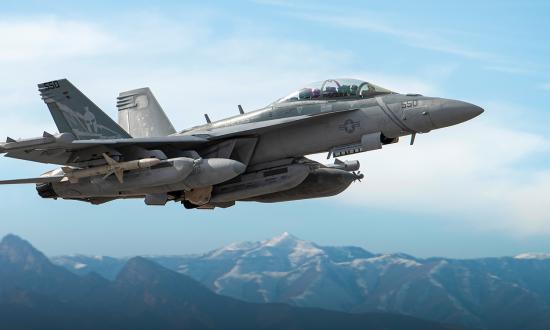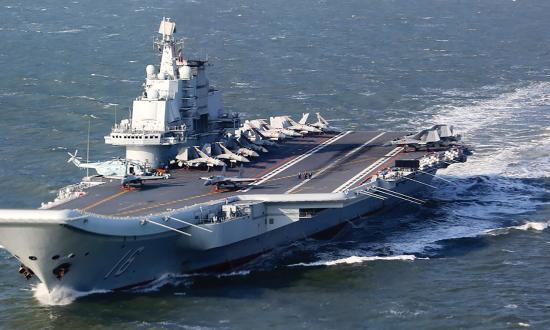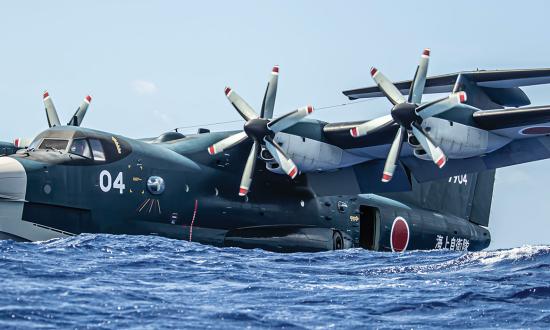The Navy has installed an operational laser on at least three Arleigh Burke–class guided-missile destroyers—the USS Dewey (DDG-105), Stockdale (DDG-106), and Spruance (DDG-111). The ships have received the AN/SEQ-4 Optical Dazzling Interdictor, Navy (ODIN), a solid-state laser capable of defeating unmanned aerial vehicles by disabling or destroying their sensors. More powerful lasers able to completely destroy threats—for example, the high-energy laser with integrated optical dazzler and surveillance (HELIOS)—are in the works but not yet ready for widespread deployment. HELIOS will be similar to a scaled-up version of the 30 kilowatt (kW) AN/SEQ-3 Laser Weapon System (LaWS) the Navy tested on the USS Ponce (AFSB-15) several years ago. Other systems are also in the works.
The Congressional Research Service’s (CRS’s) 9 May update to its report Navy Shipboard Lasers cites USNI News to call ODIN a “government-designed, -built, -tested, -installed system”—somewhat unusual in today’s typically contractor-led development programs. The same April 2021 USNI News article reported that the Navy had plans to add ODIN systems to two more DDGs in 2021 and three more in the future, for a total of eight.
The Navy has not released much detailed information about ODIN’s capabilities; even its power rating is unknown. But given the mission of “dazzling” rather than destroying drones, it is likely the power is comparable to or perhaps a bit less than that of the AN/SEQ-3 LaWS. The LaWS apparently had an effective range up to about one mile.
ODIN is focused on protecting ships from harassment by unarmed unmanned aerial systems, a problem that has reportedly plagued surface combatants in recent years. The War Zone has written extensively on the issue, most recently reporting in June about a series of drone swarm events in 2019 that affected at least seven Navy ships off the coast of California.
For more protection against more potent threats, Lockheed Martin is developing the 60 kW (“with growth potential to 150 kW,” according to CRS) HELIOS laser. Although the CRS report emphasizes that HELIOS is still developmental, in June, Hope Seck reported for Sandboxx that the first HELIOS laser was being installed on the USS Preble (DDG-88). It is expected to be a system that could permanently disable or destroy airborne drones, small surface craft (such as speed boats), and even some antiship missiles, if scaled up, the company says.
The high-power (150 kW) Northrop Grumman Laser Weapon System Demonstrator (LWSD) was installed on the USS Portland (LPD-27) several years ago and knocked down a drone in 2020 and hit a raft in a 2021 test, USNI News reports.
As “Need to Know” has previously written, developing the lasers themselves is challenging, but integrating them onto ships might be a bigger challenge. In theory, lasers offer a nearly bottomless magazine—the CRS report estimates the cost per shot around $1.15 for an ODIN or LaWS size system up to perhaps $10 for a 480-kW laser, most of that cost being the price of the fuel used to generate electricity for the laser. But the power systems of most Navy ships are not well adapted to creating short bursts of high-intensity output. The electrical generators on board today’s surface combatants are built to generate substantial but steady-state power to operate onboard computers and electronic systems, and the engines run on a separate channel that, in general, cannot be switched even temporarily to power anything but propulsion.
The Portland was a candidate for the LWSD because she has more excess space and power than smaller surface ships such as destroyers. Developing an integrated power-and-energy system (IPES) is perhaps the most important thing the builders of the Navy’s future destroyer can accomplish. An IPES not only allows any engine on a ship to generate electricity and turn the screws, but it also employs batteries that protect the system from the negative effects of short bursts of pulsed electricity required to fire a laser. The Constellation-class frigates will not have an IPES, at least in the first flight of ships; post-DDG-51 destroyers hopefully will.
It is sometimes said that when mature, truly high-power lasers (in the megawatt class) arrive: “If it flies, it dies.” This could be true, to a point. The CRS report notes several limitations of lasers. In particular, they are restricted to line-of-sight; there is no over-the-horizon capability for a laser mounted on a ship’s hull. In addition, the atmosphere—especially at sea—can wreak havoc with lasers. Sand, dust, smoke, and water vapor can all absorb or scatter laser energy, as can turbulence. Thermal blooming, which also reduces the net effective power of a laser, is the by-product of a laser heating the air as it passes through. (This effect is most pronounced in a constant bearing, decreasing range “down the throat” shot.) Adaptive optics and selection of laser wavelengths can mitigate these effects to some degree.
But lasers can be overwhelmed by saturation attacks and weapon design. Even a 1-MW laser would take a few seconds to destroy an enemy vehicle or weapon—longer if the threat has been hardened against lasers. The report also notes that stray laser light is a threat to aircraft, satellites, and human eyes, all of which are at risk at distances much greater than the weapon’s effective range against machines.
Nevertheless, the ODIN systems on destroyers today are surely just the beginning. The first aerial bomb was dropped by an Italian pilot from a flimsy canvas-and-wood Taube monoplane in 1911. Barely a decade later, Army Brigadier General Billy Mitchell led a demonstration proving bombs could sink capital ships, and not very long after that, air power began to play an outsize role in warfare. Shipborne lasers may be at the Taube stage today, but it probably won’t be decades before their effects have grown dramatically.
QuickSink Update
In April, “Need to Know” reported on the QuickSink program from the Air Force Research Lab (AFRL). AFRL modified a GBU-31 Joint Direct Attack Munition (JDAM) to attack ships at sea, releasing information on the $25,000 weapon in early March. A month later, on 28 April, AFRL conducted a test in the Gulf of Mexico, sinking an old cargo ship. The video shows the bomb appearing to strike the ship below the waterline, breaking the ship’s back and lifting it out of the water.
While the system’s 15-mile range is too short for attacks on well-defended vessels, it appears to be another arrow in the quiver for attacks on softer targets at sea. The test was conducted by AFRL, the 780th Test Squadron of the 96th Test Wing, and the 85th Test and Evaluation Squadron of the 53rd Wing.









